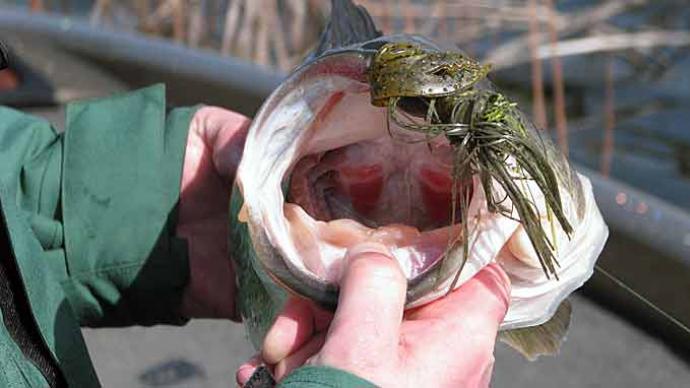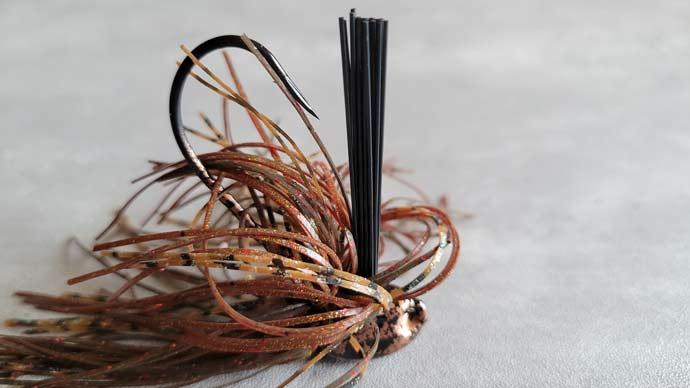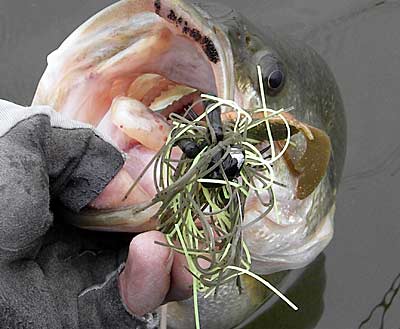
During the cold-water period of the year, what is your go-to bait? I know many of you will have different options, but for me, it's hands down a jig. Whenever the water gets cold, a jig is one of the baits I'll turn to when looking for bass and getting bites.
That is not to say that my first pass through an area that I think is holding bass, I'll throw either a crankbait or grab a spinnerbait to see if I can get a bass or two to bite. If I don't get any takers on these or other moving baits, I'll grab a jig and start to pick the area apart, looking for signs of bass and bites before I move on.
Let’s take a closer look at the cold-water period and the power that a jig has at this time of the season. We will also cover a few things that you can do to help you get more bites and bass in your boat during this period.
Jig Options
We will start by breaking down jig options that you should have in your cold-water jig selection. My first jig pick is a weed jig. I'm a fan of a bullet head jig for this selection. All through the season, I can use this as a weed jig or even use it as a swim jig when needed.
My next jig selection is a jig that can be used for two different situations. That jig is an Arky jig. I can use an Arky jig as a weed jig, and I have also used it as a rock jig, primarily when I can't fish a football jig clean. If I'm fishing a football jig but getting it snagged, I'll switch to an Arky jig to fish the rocks. I can fish an Arky jig over the rocks because of the eye placement, unlike a football jig that can get stuck in rocks. The Arky jig is one of the first all-around jigs to hit the bass market, making it versatile.
The last jig on my list is the football jig. This jig stands out when you're fishing in waters that have a significant crawfish population. A football jig imitates a craw as best can be by just dragging your jig along the bottom. The head shape of the football jig adds its action to your jig as it moves across the bottom just like a craw.
Dressing Your Jig
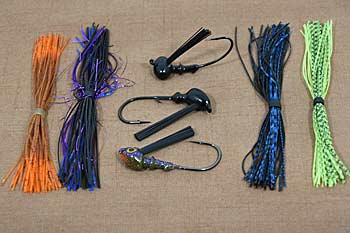
When it comes to jig skirts, your first goal is to match the forage in your waters. Pick skirts that look like what you're trying to imitate. What is the number one food source in your waters that you're trying to imitate? Bluegills are the bass’ top food source in my waters, with perch playing a roll, followed by craws.
One crucial fact to remember when we get to this time of the season, in some waters that get cold enough, craws may start to have less of an impact as they may become inactive in some Northern water locations. I'll let you determine how much of an impact craws have in your waterways.
If they stay active in your area, make sure that you have them on your list, but use them sparingly if you're in an area that craws don't have as much impact. Let me add one note here, in cases like this, I have kept them in the mix as bass will look at the opportunity to have something that they may not get as much at this time of the season, and that may trigger a bite.
I'll make regular skirts to match the forage in my waters, but I'll also make some skirts and add accent colors to them for fishing when faced with dirty/stained fishing conditions. I include strands of red, orange, and chartreuse accent colors to the skirts. Even in clear water conditions late in the season, I'll use these accent skirts to help draw more attention to my jig or other skirted baits. There have been days that these accent skirts will get bites from bass when other skirts won't. I call this “getting your bait noticed.” It could be the added accent strands that draw attention to your jig that gets you bites and save the day.
Trailers
Match your trailer to the forage that you're trying to imitate. In some cases, I may pick a trailer that adds action to my jig when needed. For example, I may be fishing a craw-colored skirt on my jig, but I'll add a swimbait trailer. The simple reason for this is to add action or sound to my jig, offering to get my jig noticed or found in conditions in which I'm fishing. When fishing in stained, off-colored waters or deep-water locations, add more action to your trailer to help put off sound to attract bites and draw attention to your jigs.
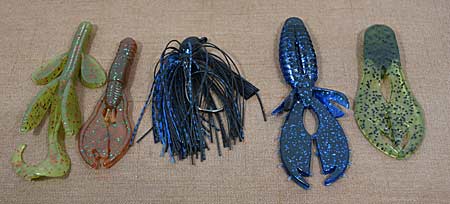
I'll also add accent colors to my trailers with dipping dye. When doing this, I'm not only adding accent colors to get my jig noticed, but I'm adding scent at the same time by using a garlic-scented dipping dye. You can look at this as a double addition at the same time. In these cases, I'm not sure if it’s the color accents that sold the bait or it was the scent that sealed the deal to get the bite. Whatever it is, just run with it and do what works.
I stock trailers for this time of the season: chunks, craws, creatures, grubs, and swimbaits. Also, look towards trailers to help bulk up your baits or use certain trailers to help adjust the fall rate of your jig.
If you're struggling to get bites, slow the fall of your jig down with a bigger trailer to keep it in the strike zone a little longer. This minor adjustment can pay big dividends on some days. Don't be afraid to experiment on off days when looking for bites.
Tackle Adjustments
I'll start my fishing day by matching my jig fishing equipment to the conditions I face. For me, I generally start with a 7’ to 7’2” MH baitcasting rod that is teamed with a reel spooled with 16lb Sunline Sniper Fluorocarbon line. That is my go-to day in and day out setup that I fish jigs with. I have been known to switch my setup a little when faced with windy conditions, or it's tough to feel light bites.
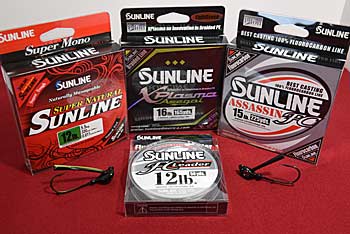
If bites are tough to feel, I'll switch to a reel filled with Sunline 30lb Xplasma Asegai braid. The braided line offers me a better feel and better hook setting power to help deal with the windy conditions. I still put a FC leader on my braid to help disguise my line and give me a minor stretch factor in my line makeup.
When I get into the tough bite conditions where the bass tend to drop the bait before I can get a chance to get a hook set (we have all been there before), I'll change my fluorocarbon leader to a monofilament leader. By making this adjustment, I have put a little buffer into the mix, to where the bass can't feel me as well, and they tend to hold the bait just a little longer, giving me a better chance to get a good hook set. This will add up to a full day of fishing. So make sure you keep this tough-condition tweak in your back pocket for the days when bites get extra tough, and they drop the jig before you get a chance to set the hook.
Jigs are a bait that can catch bass all season long, but they really excel when the water gets cold, so use this to your advantage. Bass’ metabolism starts to slow down with a colder water temperature. If you want to catch bass, you will also have to slow down your presentation to put more odds in your favor. Don't be afraid to experiment with skirts and trailers. Mix both to get the best results.
BassResource may receive a portion of revenues if you make a purchase using a link above.


